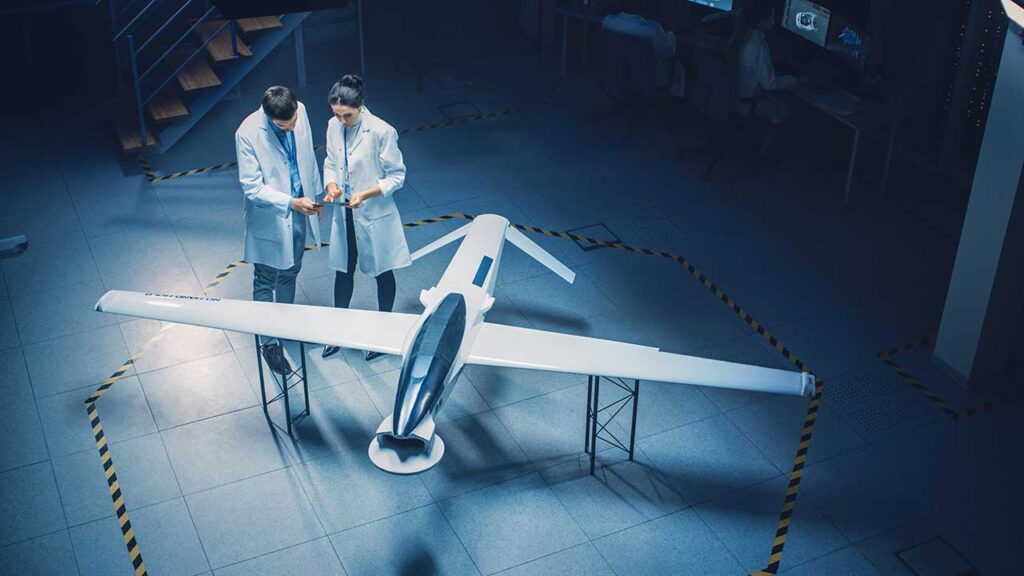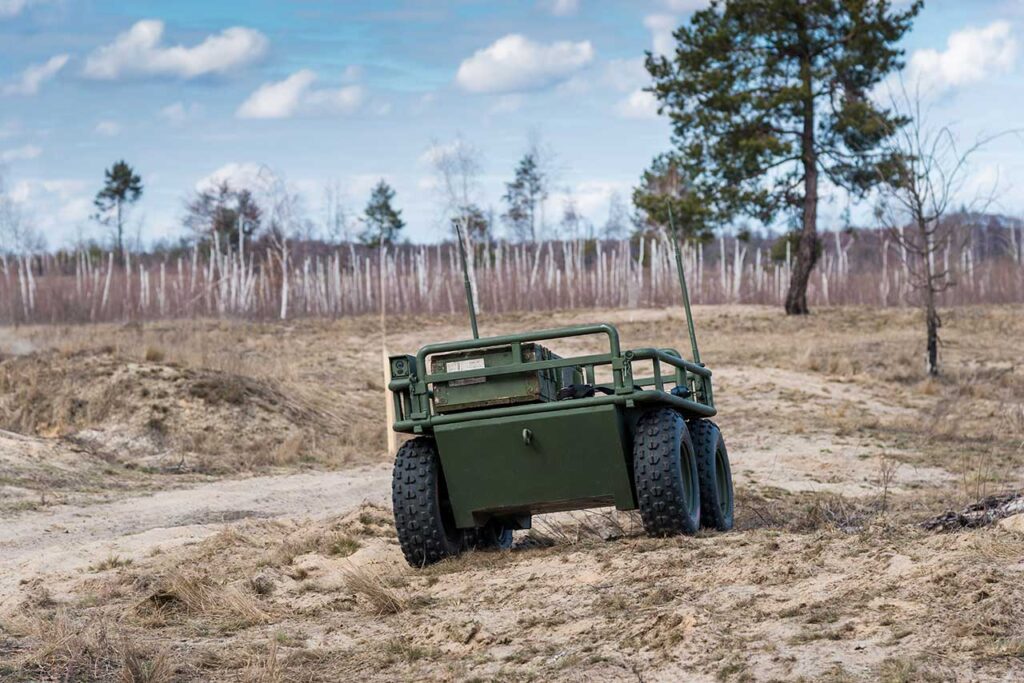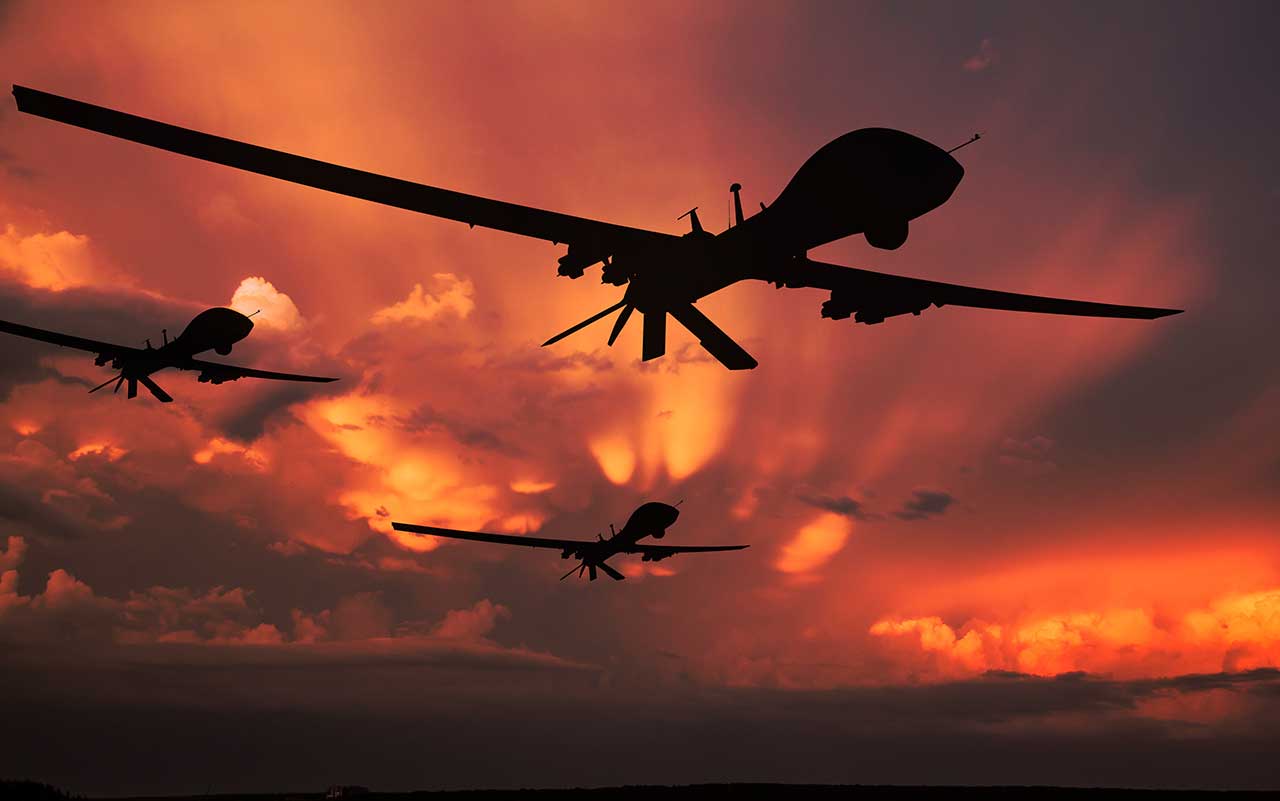Emerging threats have rewritten the rules of warfare. In conflicts from Ukraine to the Indo-Pacific, uncrewed systems (UxS)—drones, ground robots, and electronic warfare (EW) platforms—have become essential tools for modern militaries. Yet, as adversaries rapidly field new technologies, the U.S. Department of Defense (DoD) faces a critical challenge: How can it keep pace, or even outpace, this global innovation race? The Defense Innovation Unit’s (DIU) Project G.I. Challenge aims to answer that question, not with slow-moving bureaucracy, but with a bold, agile approach that puts warfighter needs and commercial ingenuity front and center.

The Urgency: Why Project G.I. Exists
The character of war continues to shift. Peer and near-peer adversaries are deploying UxS at an unprecedented rate, democratizing capabilities like persistent surveillance, precision targeting, and electronic disruption. These platforms deliver mass effects at low cost and at scale. As such, they have fundamentally changed how battles are fought and won.
Traditional acquisition processes, with their lengthy requirements documents and rigid timelines, cannot keep up. The result: American warfighters often lack the tools they need to train, fight, and prevail in rapidly evolving operational environments. As DIU Director Doug Beck put it, “Today, warfighters lack the unmanned systems needed to train for combat and prevail if called upon to use them. DIU is laser focused on getting best-of-breed technology in the hands of the warfighter today and scaling it for training, adoption, and readiness.”
Project G.I. is DIU’s answer—a $20 million prize challenge designed to rapidly identify, test, and field “ready-now” autonomous solutions that address the real-world needs of U.S. military units.
A New Model: From Problem to Prototype—Fast
At the heart of Project G.I. is a radical departure from the traditional requirements-driven process. Instead of dictating precise technical specifications—size, weight, payload, endurance—DIU describes the operational problems warfighters face and invites the commercial sector to propose solutions. This approach recognizes that industry, driven by competition and creativity, remains best positioned to deliver innovative, effective, and cost-efficient answers.
DIU structured the challenge around three Design Reference Missions (DRMs). Each represents a unique operational scenario and set of constraints as identified by actual military operators. These DRMs are not static; they evolve in response to the changing realities of the modern battlefield. For example, a unit operating in the high desert of Arizona faces different challenges than one in the jungles of the Indo-Pacific or the forests of Europe. By partnering directly with diverse end users, DIU ensures that solutions remain relevant, adaptable, and immediately impactful.
The Battlefield Problem: Denied, Disrupted, Intermittent, and Low-Bandwidth (DDIL) Environments
One of the defining features of contemporary conflict is the prevalence of DDIL conditions—battlefields where communications are jammed, networks are intermittent, and bandwidth is scarce. Project G.I. specifically seeks solutions that enable small, dispersed targeting-strike cells to sense, decide, and strike in these challenging environments, without relying on consistent connectivity or extensive logistical support.
This focus on DDIL operations reflects lessons learned from recent conflicts, where adversaries have demonstrated sophisticated EW capabilities. Platforms that can operate independently, resist jamming, and deliver effects despite degraded communications are not just desirable—they are essential to avoid future overmatch.
What DIU Wants (and Doesn’t Want)
DIU’s message to industry is clear: Don’t just give us what we ask for—give us what we need. The challenge avoids prescriptive requirements, instead describing the operational problems and inviting a wide range of solutions. Whether it’s a fixed-wing drone, a vertical takeoff platform, a ground robot, or a software-only capability, the key is that it solves the problem as defined in the relevant DRM.
This philosophy extends to the evaluation process. Submissions are not judged by how closely they match a checklist of technical specs, but by their ability to deliver operational effects in real-world conditions. DIU encourages modularity, interoperability, and open architectures—solutions that can integrate with existing systems and adapt to future needs. The organization explicitly discourages proprietary, closed systems that only work with a single vendor’s technology.
The Submission Process: Open, Flexible, and Readiness-Focused
DIU designed Project G.I. to be accessible and flexible, with an open and rolling solicitation window running through the last day of the year. Companies can submit when their solution is truly “mission ready”—not just a lab prototype, but a system that can operate in realistic environments and meet the demands of military users.
Submissions require a concise pitch deck (up to eight slides, plus one for each DRM addressed) and a video demonstrating the solution in real-world operation. DIU’s evaluators, drawn from across the Department of Defense (DoD), review these materials with a focus on readiness, relevance, and adaptability. Companies are encouraged to tell their story—how their technology addresses the problem, how it works in practice, and how it can be iterated and improved based on user feedback.
DIU welcomes international participation, with the caveat that companies from certain “covered countries” are excluded for security reasons (think: Iran, China, Russian and North Korea, for starters). DIU also emphasizes the importance of compliance with relevant U.S. laws and executive orders regarding manufacturing and component sourcing (think: Section 848 of the FY20 NDAA).
The Phased Approach: From Pitch to Fielding
Project G.I. unfolds in three phases, each designed to winnow the field and focus resources on the most promising solutions:
- Phase One: Open submission and initial evaluation. Selected companies move forward based on the strength and readiness of their proposals.
- Phase Two: In-person demonstration with DoD end users. Companies receive travel funding (up to $50,000) to participate in hands-on testing and feedback sessions at U.S. military ranges.
- Phase Three: Finalists receive initial awards (up to $500,000), with the potential for total funding up to $3 million, contingent on meeting successive criteria and delivering operational results.
Throughout the process, DIU prioritizes rapid iteration and close collaboration between companies and warfighters. The DIU team provides feedback each stage, with detailed one-on-one sessions for Phase Two participants. The goal is not just to select winners, but to help all participants learn, adapt, and improve their offerings for future opportunities.
Beyond Drones: The Full Spectrum of UxS
While DIU has put much of its attention on drones, or Uncrewed Aerial Systems (UAS), it made Project G.I. deliberately broad to encompass uncrewed ground vehicles and EW platforms as well. The modern battlefield is a complex ecosystem. DIU recognizes that gaps exist across all domains. By welcoming solutions that address any aspect of the UxS challenge—whether platform, payload, software, or subsystem—Project G.I. seeks to catalyze innovation across the entire spectrum.
Mission Ready, Not Just Mission Possible
A recurring theme in DIU’s guidance is its emphasis on “mission ready” solutions. This means more than a successful lab test; it means a system that can be fielded, operated by real users in realistic conditions, and iterated rapidly based on feedback. Companies are encouraged to wait until their solution is truly ready before submitting, rather than rushing to meet an arbitrary deadline.
This approach is designed to avoid the common pitfall of fielding immature technologies that fail to deliver in the real world. Instead, Project G.I. aims to put proven, adaptable tools in the hands of warfighters as quickly as possible, while maintaining the flexibility to improve and evolve those tools over time.

The Endgame: From Prize Challenge to Production
Winning Project G.I. would mark just the beginning for a successful contender. DIU intends to transition successful solutions from the prize challenge to prototype Other Transaction Authority Agreements (OTAAs), and ultimately to production contracts. It designed this pathway to accelerate the journey from innovation to impact —and bypass the traditional bottlenecks of defense acquisition.
The challenge also aligns with broader DoD efforts to streamline software updates and approvals, with the goal of reducing the time required for new releases from weeks to days. This commitment to speed and agility is essential for maintaining technological advantage in a fast-moving threat environment.
Lessons for Industry: What Makes a Strong Submission
DIU’s experience has surfaced several key lessons for companies seeking to participate in Project G.I. and similar challenges:
- Address the specific problems outlined in the DRMs. Generic solutions or “pie in the sky” ideas will not likely succeed.
- Demonstrate mission readiness with real-world testing and operational feedback.
- Emphasize modularity, interoperability, and openness—solutions that integrate easily and avoid vendor lock-in.
- Engage directly with end users to understand their needs and incorporate their feedback.
- Provide all required materials, including a clear pitch deck and accessible demonstration video.
- Be transparent about capabilities, limitations, and readiness levels.
Above all, DIU encourages companies to focus on delivering value to the warfighter. The ultimate goal is not just technological innovation, but operational advantage—tools that help American service members train, fight, and survive in the world’s most demanding environments.
The Strategic Impact: Catalyzing a New Era of Defense Innovation
Project G.I. represents more than a mere competition; it is a blueprint for turning a new page in the book of defense innovation. By breaking down barriers between the DoD and the commercial sector, empowering end users, and prioritizing speed and adaptability, DIU has set a new standard for how the U.S. military acquires and fields technology.
This approach does more than deliver better tools to the battlefield—it also fuels the broader ecosystem of American innovation. As Beck noted, “Doing this at speed will, in turn, help catalyze the necessary scaling and readiness through major acquisition and training efforts across the Services that will deliver strategic impact—and will simultaneously support the flywheel of American private sector dynamism in delivering against that strategic need.”
A Call to Innovators
The stakes for Project G.I. could not be higher. In a time where technological advantage seems fleeting and the margin for error, razor-thin, the ability to rapidly field effective, adaptable uncrewed systems remains essential for national security. DIU’s Project G.I. Challenge offers a unique opportunity for innovators—large and small, domestic and international—to make a direct impact on the future of warfare.
For those ready to meet the challenge, the path is clear: Understand the problem, engage with end users, prove your solution in the real world, and be prepared to iterate at speed. The future of defense innovation is being written now—and Project G.I. is leading the way.
By: Dawn Zoldi

